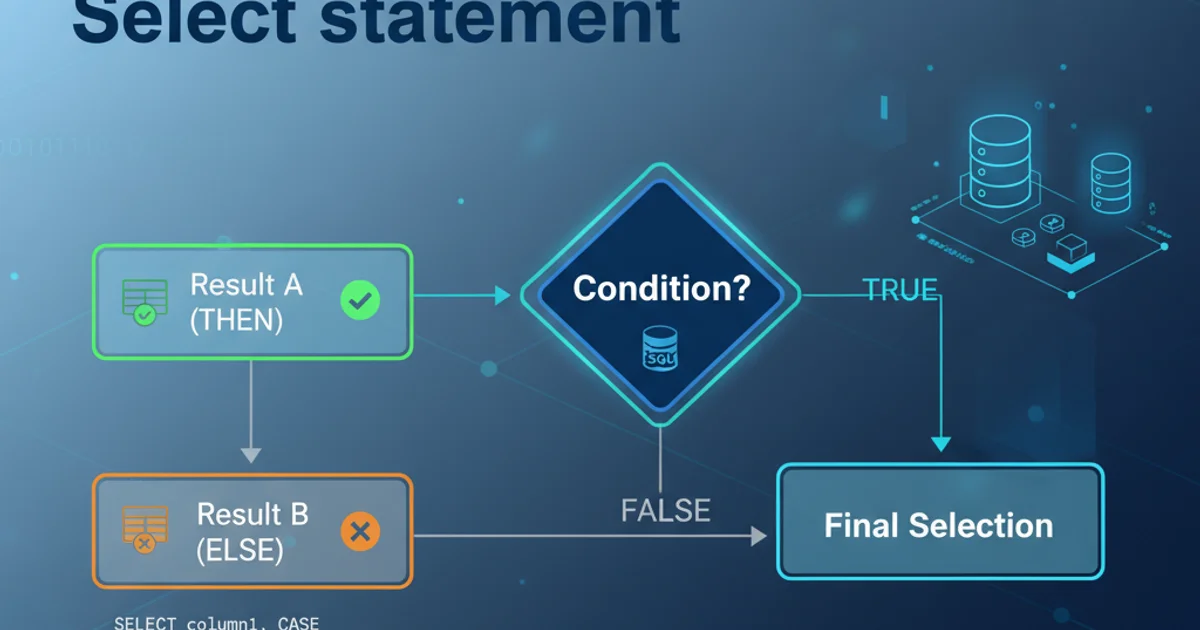How to read complete data in QTcpSocket?
Categories:
Mastering QTcpSocket: Ensuring Complete Data Reception in Qt

Learn effective strategies and best practices for reliably reading all incoming data from a QTcpSocket in Qt applications, preventing common pitfalls like partial reads.
When working with network programming in Qt, QTcpSocket is your go-to class for TCP communication. However, a common challenge developers face is ensuring that all incoming data is read completely and correctly. TCP is a stream-oriented protocol, meaning data arrives as a continuous stream, not as discrete messages. This article will guide you through the best practices for handling QTcpSocket data reception, focusing on how to read complete messages and avoid partial reads.
Understanding QTcpSocket's read Behavior
The QTcpSocket class provides several methods for reading data, such as read(), readAll(), and peek(). It's crucial to understand that these methods only read the data currently available in the socket's internal buffer. They do not wait for a 'complete message' to arrive. If your application expects messages of a certain structure (e.g., fixed size, length-prefixed, or delimited), you must implement a mechanism to buffer and reassemble these messages yourself.
sequenceDiagram
participant Client
participant Server
Client->>Server: Send Data Packet 1
Note over Server: QTcpSocket receives part of Packet 1
Server->>Server: `readyRead()` emitted
Server->>Server: `readAll()` reads partial data
Server->>Server: Wait for more data
Client->>Server: Send remaining Data Packet 1
Note over Server: QTcpSocket receives rest of Packet 1
Server->>Server: `readyRead()` emitted
Server->>Server: `readAll()` reads remaining data
Server->>Server: Reassemble complete messageSequence diagram illustrating partial data reception and reassembly
Strategies for Complete Data Reception
To reliably read complete data, you need a strategy to define what constitutes a 'complete message'. Here are the most common approaches:
readyRead() signal of your QTcpSocket. This signal is emitted whenever new data arrives and is available for reading.1. Fixed-Size Messages
If your protocol dictates that all messages are of a fixed size, this is the simplest approach. You read data into a buffer until the buffer reaches the expected message size.
void MyClient::readFixedSizeData()
{
QByteArray buffer;
qint64 bytesToRead = 1024; // Example: expecting 1KB messages
while (socket->bytesAvailable() > 0) {
buffer.append(socket->readAll());
if (buffer.size() >= bytesToRead) {
// We have at least one complete message
QByteArray completeMessage = buffer.mid(0, bytesToRead);
// Process completeMessage
qDebug() << "Received fixed-size message:" << completeMessage.toHex();
// Remove processed data from buffer
buffer.remove(0, bytesToRead);
}
}
}
Example of reading fixed-size messages
2. Length-Prefixed Messages
This is a robust and widely used method. Each message is prefixed with its length (e.g., a 4-byte integer). You first read the length prefix, then read the specified number of bytes for the actual message body.
void MyClient::readLengthPrefixedData()
{
static QByteArray dataBuffer; // Buffer to accumulate incoming data
static quint32 nextBlockSize = 0; // Stores the size of the next message
dataBuffer.append(socket->readAll());
QDataStream in(&dataBuffer, QIODevice::ReadOnly);
in.setVersion(QDataStream::Qt_5_15); // Or your desired Qt version
for (;;) {
if (nextBlockSize == 0) {
if (dataBuffer.size() < sizeof(quint32)) {
break; // Not enough data to read the block size
}
in >> nextBlockSize;
}
if (dataBuffer.size() < nextBlockSize + sizeof(quint32)) {
break; // Not enough data to read the entire block
}
QByteArray messageBody;
in >> messageBody; // Reads 'nextBlockSize' bytes into messageBody
// Process complete messageBody
qDebug() << "Received length-prefixed message:" << messageBody.toHex();
// Reset for next message
nextBlockSize = 0;
dataBuffer = dataBuffer.mid(sizeof(quint32) + messageBody.size()); // Remove processed data
in.device()->seek(0); // Reset stream position for new dataBuffer
}
}
Example of reading length-prefixed messages using QDataStream
QDataStream for length-prefixed messages, ensure both sender and receiver use the same QDataStream::Version. Mismatched versions can lead to incorrect data interpretation.3. Delimited Messages
For text-based protocols, messages are often terminated by a specific delimiter, such as a newline character (\n) or a null character (\0). You read data until the delimiter is found.
void MyClient::readDelimitedData()
{
static QByteArray dataBuffer; // Buffer to accumulate incoming data
dataBuffer.append(socket->readAll());
int newlineIndex;
while ((newlineIndex = dataBuffer.indexOf('\n')) != -1) {
QByteArray completeMessage = dataBuffer.mid(0, newlineIndex);
// Process completeMessage (e.g., convert to QString)
qDebug() << "Received delimited message:" << QString(completeMessage);
// Remove processed data and the delimiter
dataBuffer.remove(0, newlineIndex + 1);
}
}
Example of reading newline-delimited messages
Putting It All Together: A Robust readyRead() Slot
Regardless of the strategy, your readyRead() slot should always accumulate incoming data into a persistent buffer (e.g., a QByteArray member variable) and then attempt to extract complete messages from that buffer in a loop. This ensures that if multiple messages or parts of messages arrive in a single readyRead() emission, they are all processed correctly.
// In your class header (.h)
class MyTcpHandler : public QObject
{
Q_OBJECT
public:
explicit MyTcpHandler(QTcpSocket *socket, QObject *parent = nullptr);
private slots:
void onReadyRead();
void onDisconnected();
private:
QTcpSocket *m_socket;
QByteArray m_readBuffer; // Persistent buffer
quint32 m_nextBlockSize; // For length-prefixed messages
void processReceivedMessage(const QByteArray &message);
};
// In your class implementation (.cpp)
MyTcpHandler::MyTcpHandler(QTcpSocket *socket, QObject *parent) : QObject(parent),
m_socket(socket),
m_nextBlockSize(0)
{
connect(m_socket, &QTcpSocket::readyRead, this, &MyTcpHandler::onReadyRead);
connect(m_socket, &QTcpSocket::disconnected, this, &MyTcpHandler::onDisconnected);
}
void MyTcpHandler::onReadyRead()
{
m_readBuffer.append(m_socket->readAll());
QDataStream in(&m_readBuffer, QIODevice::ReadOnly);
in.setVersion(QDataStream::Qt_5_15);
for (;;) {
if (m_nextBlockSize == 0) {
if (m_readBuffer.size() < sizeof(quint32)) {
break; // Not enough data for block size
}
in >> m_nextBlockSize;
}
if (m_readBuffer.size() < m_nextBlockSize + sizeof(quint32)) {
break; // Not enough data for the full message
}
QByteArray messageBody;
in >> messageBody;
processReceivedMessage(messageBody);
m_nextBlockSize = 0;
m_readBuffer = m_readBuffer.mid(sizeof(quint32) + messageBody.size());
in.device()->seek(0);
}
}
void MyTcpHandler::processReceivedMessage(const QByteArray &message)
{
qDebug() << "Complete message received:" << message.toHex();
// Your application-specific message processing logic here
}
void MyTcpHandler::onDisconnected()
{
qDebug() << "Socket disconnected.";
// Clean up or handle disconnection
}
A robust QTcpSocket handler using the length-prefixed message strategy
QIODevice::read() with a pre-allocated buffer instead of readAll() to minimize reallocations, though readAll() is generally sufficient and convenient for most applications.